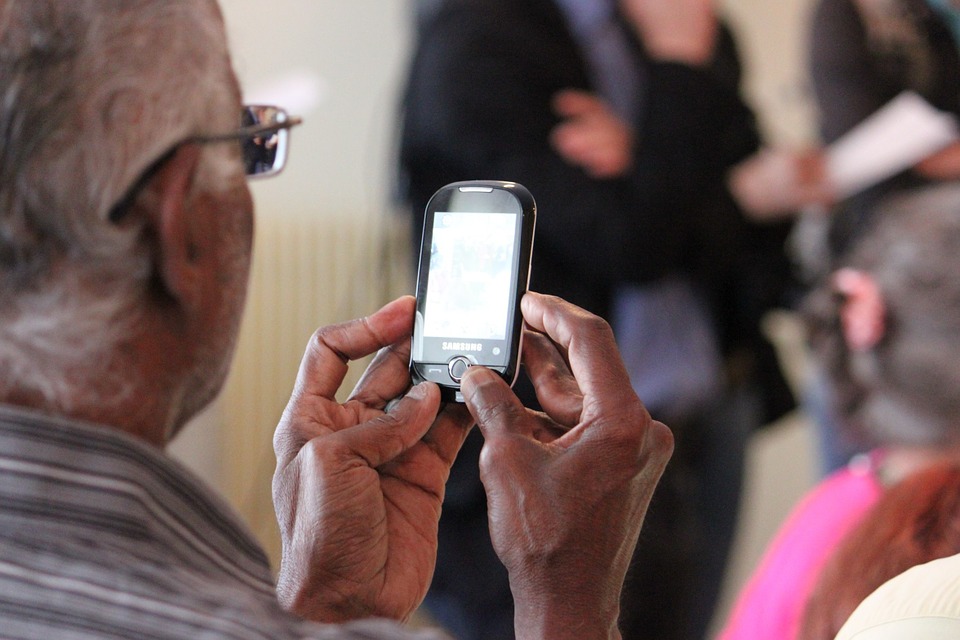
In a study, Penn State researchers found that older adults often serve in roles as community innovation leaders, helping in efforts as diverse as revitalizing homes to galvanizing environmental initiatives. Image: Pixabay
Older adults can serve communities as engines of everyday innovation
Posted on June 27, 2019UNIVERSITY PARK, Pa. — Encouraging hobbies and activities is more than an important part of healthy aging. According to a team of Penn State College of Information Sciences and Technology researchers, these passions of older adults can be sources of innovation that benefit the entire community.
In a study, the researchers found that older adults are often leaders in innovation, coupling their knowledge and creativity to, among other things, revitalize communities, improve the environment, and pass on skills and hobbies, according to John Carroll, distinguished professor of information sciences and technology and an associate of the Institute for Computational and Data Sciences. He added that he hoped the findings helped change current notions of aging.
“The idea behind the project is how we can reframe old age as a time when people can contribute and have capacity and are valuable and creative,” said Carroll, who also serves as the director of the college’s Center for Human-Computer Interaction. “It is very different from the traditional way of looking at aging, which is to see people as they age as requiring custodial care, becoming things that we need to take care of. We think that’s wasteful and, as old age becomes a longer period of time and as more people are in that phase of life, it’s just sensible to explore how older adults can do more and be more.”
Xiying Wang, postdoctoral scholar, and Tiffany Knearem, doctoral student, who worked with Carroll on the study, interviewed older adults to better understand their personal interests and how those interests generated new ideas and innovations. They found that not only do older adults teach traditional skills, but the end products are often donated to the community, said Wang, adding that some study participants even put an innovative twist on how they distributed those products.
“A good example was the knitting group that met in the library and made a lot of scarves,” said Wang. “After they were done, they would put the scarves on the statues in front of the library for people to take in the winter. If people are cold, they can pick up a scarf, which I thought was pretty interesting and creative.”
Older adults also held leadership positions in community organizations and spearheaded efforts to explore issues and problems in the area, such as helping to revitalizing historic buildings, improving local water quality and supporting nonprofit groups, according to the researchers.
In contrast to some stereotypes that suggest older people shy away from technology, the older adults in the study used technology as tools for everyday innovation. One participant used Google Sheets to help a water quality group keep and publicly share accurate records of the data the organization collected. Another participant used his web programming skills to help a friend.
Technology can facilitate everyday innovation by helping people find and participate in active local groups. Wang said technology companies can play a key role in facilitating innovation among older adults by making websites and tools more user-friendly for the older population.
“We need to think about technology in a different lens and incorporate the needs of older adults and reflect on some of their creative causes to support them to generate innovative ideas,” said Wang. “We see aging not as something that is problematic, but we see aging as an innovative process as long as we can support older adults in generating and improving innovation based on what they’re interested in. They become more active in life and also more active in the activities that they do.”
The researchers added that communities also should find ways to pinpoint and acknowledge examples of older adult innovations.
The researchers, who presented their findings recently at the proceedings of the European Alliance for Innovation’s International Conference on Pervasive Computing Technologies for Healthcare, recruited 20 older adults who were active at a central Pennsylvania senior center for semi-structured interviews. The adults were all 65 years old or older and lived in their own homes. According to the researchers, older adults who live at home make up about 90 percent of the 49.5 million older adults in the U.S.
Gaining trust was an important part of the study process. To help establish deeper connections, the team led workshops to help older adults learn technology, such as hosting classes on how to better use Facebook and smartphones.
“Relationship-building was key for this study to establish trust,” said Knearem. “We came, we got to know the people, we played cards and games and became familiar with them. And we wanted to give back for the help that they were giving us.”
Knearem added that the group’s future research will continue to explore ways to help older adults become more innovative and find ways that they can support innovation in each other.
The National Science Foundation supported this work.
